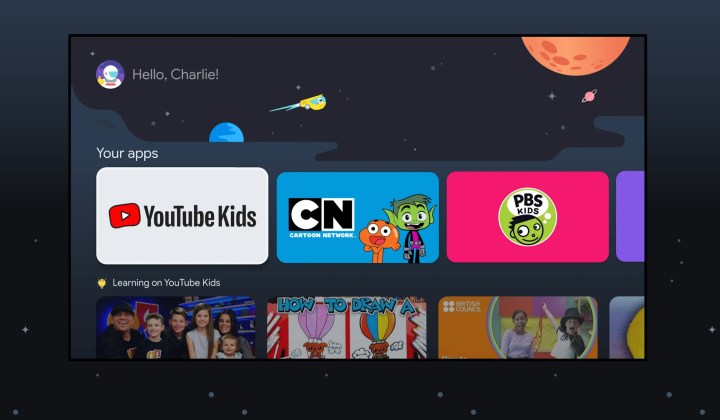If you’ve been seeing the phrase “Google TV” more frequently in 2021, there’s a good reason for it. Google TV isn’t a new service but rather a big redo of an older service, Android TV. We have a guide exploring the ins and outs of Google TV, but we wanted to take a moment to address a more specific concern: How exactly is Google TV affecting Android TV going forward? Our FAQ has the answers that all Android TV users should know!
Further reading
- TCL’s 5- and 6-Series TVs now available with Google TV, Dolby Vision, HDR10+
- Google TV releases update, adds voice search and new programming guide
- What is Google TV? Here’s everything you need to know
- What is Android TV? Google’s smart TV platform fully explained
What is Google TV?
Google TV is a new interface for the Android TV platform that Google uses to provide content for TV viewing via devices like set-top boxes, dongles, and smart TVs. It’s more than a basic theme and rebranding, too: Google is reworking the UI layer of Android TV to be more user-friendly and easier to navigate. As a result, it looks and acts significantly differently and may take users a little time to get used to the new possibilities.
The Google TV software updates began in 2021 and are currently rolling out slowly, so both Android TV and Google TV are working at this time.

Does Google TV add any new features?
It does! Behind the scenes, new artificial intelligence (A.I.) features can recommend content based on your Google profile and how you use streaming services. The new tab-based menu arrangement also allows for new sections like the For You tab, more focus on live TV, a Watchlist section that holds your bookmarks from streaming apps, and better integration with YouTube TV. Google Assistant also has native support to act as voice search or voice command controller (although your TV will need microphones to do this). Other Google TV features include:
- Support for a kids’ mode and parental controls
- Native support for compatible home smart devices (like viewing a live video feed from security cams)
- Support for slideshows from Google Photos
- Support for multiple user accounts

Is the Google TV interface replacing Android TV entirely?
Again, keep in mind that the underlying Android TV platform is staying the same — Google TV is just using it in smarter ways with a new UI. That being said, the end goal is to replace all older Android TV versions with Google TV. By 2022, all devices offering the platform will be using Google TV, and Android TV will be permanently in the past.
On a device-by-device basis, things are a little more complicated. Devices that can be updated to Google TV have already received that upgrade or will be receiving it as the rollout continues. It’s not surprising that Chromecast was one of the first to get the new Google TV experience, along with Android phones. Sony’s smart TVs were another early pick for the rollout.
Other devices may be too old or too limited to fully upgrade to Google TV. These will most likely be phased out naturally over time as people switch to newer devices. They are also likely to receive some background benefits of Google TV’s A.I. capabilities even if they don’t get the full interface switch.
How do I know when my TV will get Google TV?
It’s still difficult to say since we’re in the middle of the rollout. So far, Android and Google devices like Chromecasts have made the jump already: If you use a Chromecast for TV, you can buy the new version that has Google TV built-in. If you use Android for TV watching, you can find Google TV on the Google Play Store.
For TV brands, Sony is offering a Google TV update for its newer Bravia TV models and is shipping new TVs with Google TV built-in and ready to set up. TCL recently announced its new line of 5- and 6-Series TVs will be powered by Google TV, too. Nvidia has announced its own Google TV update for the Nvidia Shield line. Xiaomi’s Mi Box 3 has also received a Google TV update, although the status of other Xiaomi products is currently unclear.
Not all these updates include all Google TV features, but they adopt many features and cues from its interface. For the full Google TV experience, you may need to get a Google device or buy a new TV from a brand like Sony. Remember, Google has said that by 2022, any brands that offered Android TV should be offering Google TV instead.

What if I really like Android TV?
There’s no roadmap for Android TV existing after the Google TV rollout is complete. If you have an older device, you could always try to avoid updates that would add Google TV features, but this will become less feasible over time.
What if I want to try Google TV right now?
Purchase a new Google Chromecast (usually referred to as “Chromecast with Google TV” to show the difference) or Sony Bravia TV. If you’re on Android, download it from the Google Play Store. To experience some Google TV changes, you can check for updates to your current smart TV if it previously used Android TV.
What about the Android TV remote app?
That’s changing, too. In 2021, the Android TV remote app will be replaced in a new version of Android with a built-in remote that’s native to Android instead of requiring a separate app download. This new remote will work with both Android TV and Google TV and should make managing the platform a bit easier. There’s no current timeline for this rollout.



